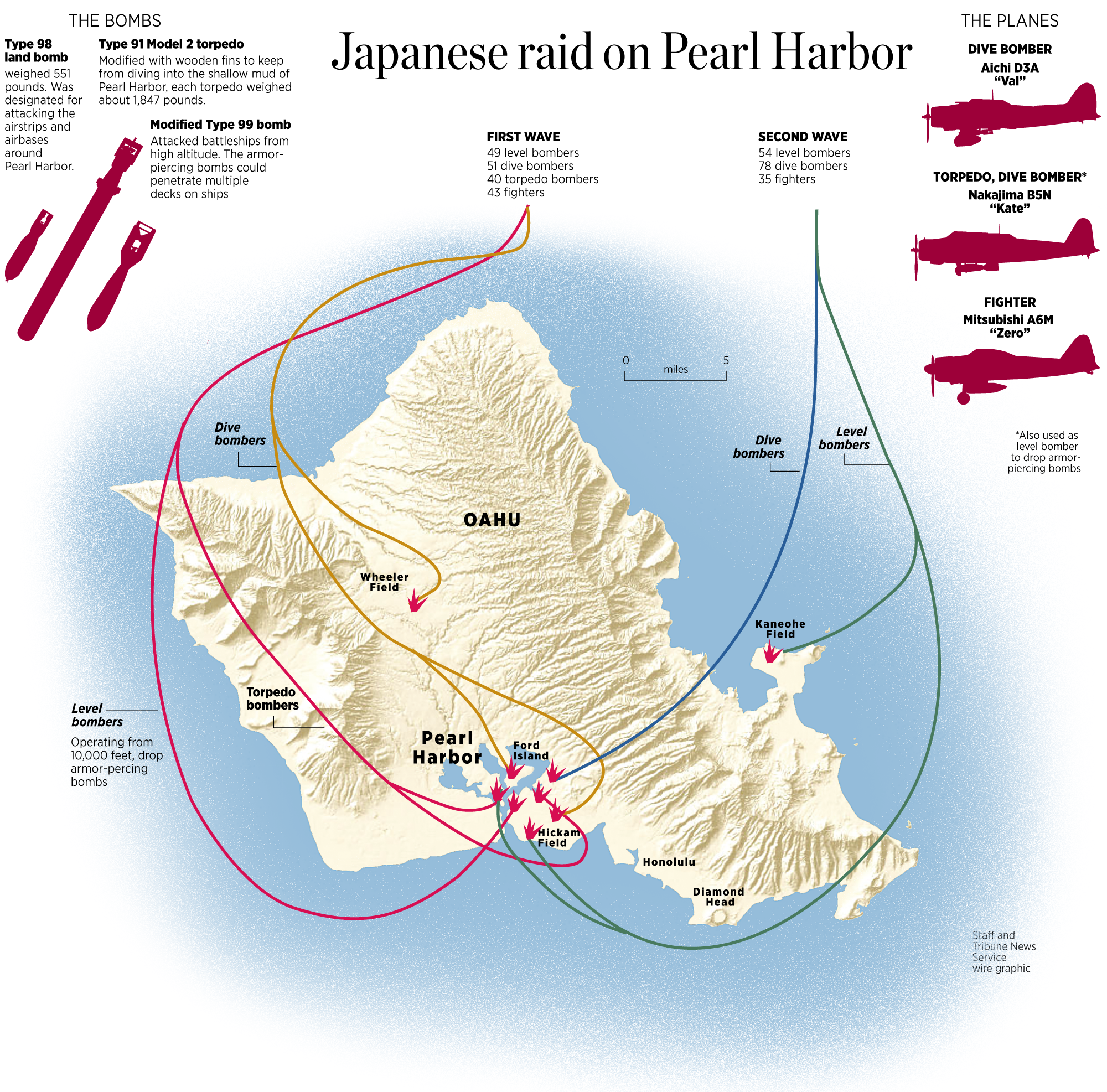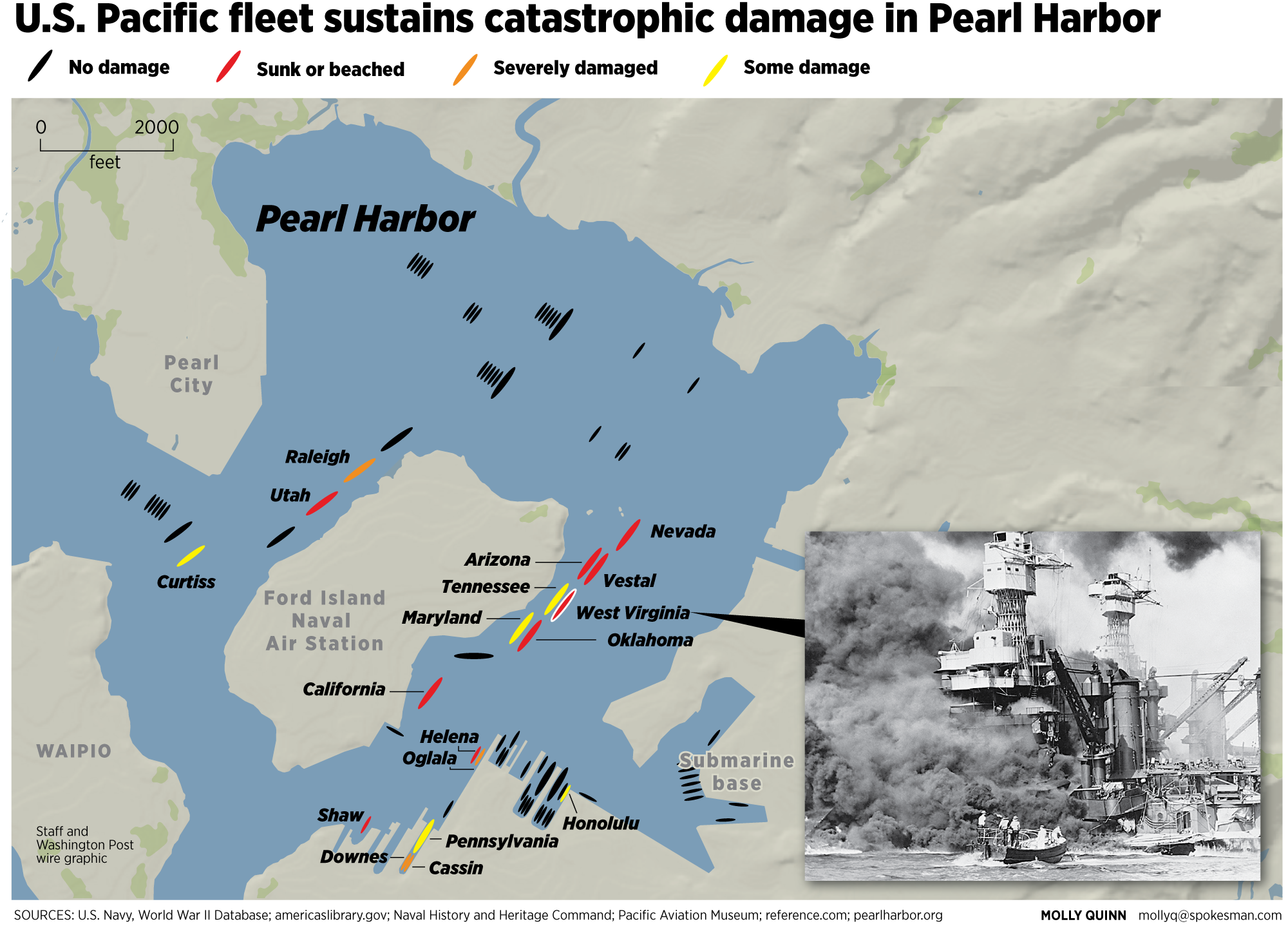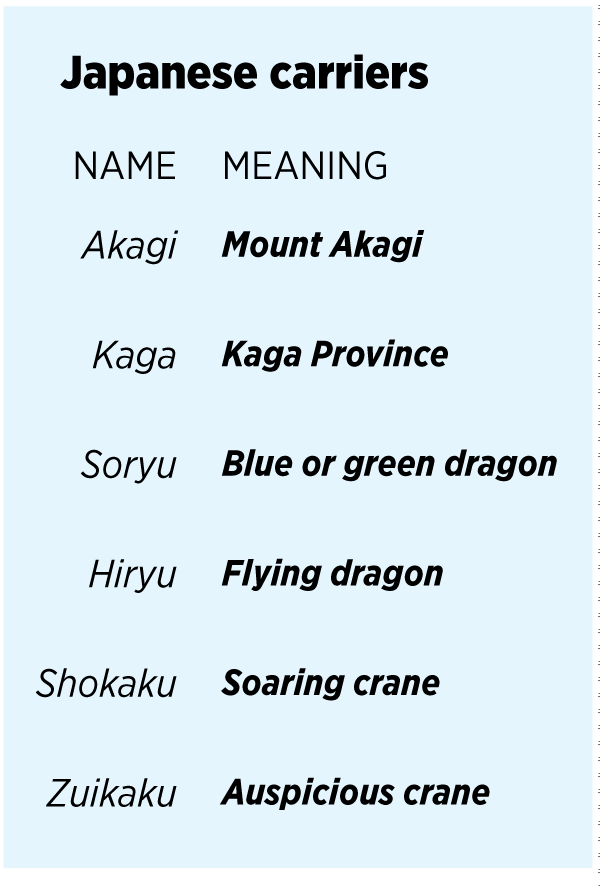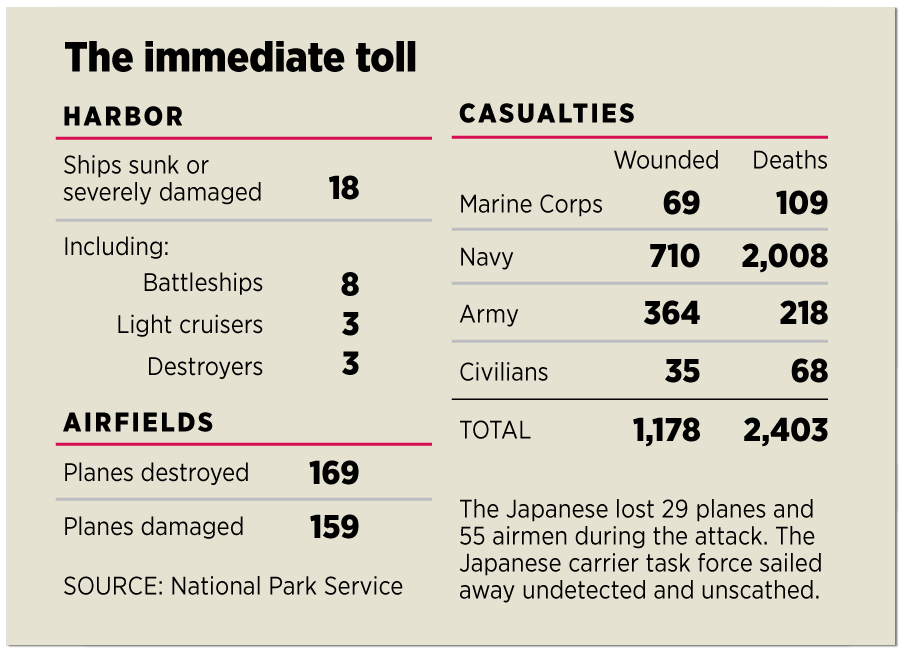
Japanese raid on Pearl Harbor
THE ATTACK ON PEARL HARBOR
Japan’s carefully planned attack on the U.S. Pacific Fleet at Pearl Harbor shocked the world and catapulted America into World War II. Under the command of Admiral Nagumo, the attack force consisted of six carriers and hundreds of planes.
The goal was to eliminate the threat of the Navy’s battleship force to Japan’s expansion. U.S. forces on Oahu were nearly defenseless against the devastating air raid, despite warning signs that were ignored, misread or received too late. Many officers and crewmen were ashore on that leisurely Sunday morning as the bombs began to drop.

Timeline of attack
Under the command of Admiral Naguma, the attack force consisted of six carriers and hundreds of planes. The goal was toe eliminate the threat of the Navy’s battleship force to Japan’s expansion.
U.S. forces on Oahu were nearly defenseless against the devastating air raid, despite warning signs that were ignored, misread or received too late. Many officers and crewmen were ashore on that leisurely Sunday morning as the bombs began to drop.
Dec. 6, 1941
President Franklin Roosevelt makes a final appeal for peace to Japan’s Emperor but receives no reply. Intercepts of coded Japanese messages lead American leaders to believe a Japanese attack in Southeast Asia is imminent. Early the next morning, the War Department sends an alert to naval headquarters on Oahu via commercial telegraph. Unfortunately, the message arrives four hours after the attack begins.
Dec. 7, 6:10 a.m.Japanese aircraft carriers 230 miles north of Oahu launch the first wave of 183 fighters, bombers and torpedo planes.
6:45 a.m.The first shot is fired by the U.S. destroyer Ward, which spots and sinks a Japanese two-man midget submarine as it tries to enter Pearl Harbor.
7:02 a.m.Two Army operators at a north shore radar station detect the approaching planes. A junior officer disregards the report.
7:15 a.m.The second attack wave of 167 planes takes off from the Japanese carriers and heads for Pearl Harbor, which is not on a state on high alert. Aircraft are parked wingtip to wingtip on airfields, anti-aircraft guns are unmanned, and many ammunition boxes are locked.

The first assault wave strikes airfields and battleships with dive bombers, torpedo bombers, high-level bombers and Zero fighters. Flight commander Mitsuo Fuchida sounds the battle cry: “Tora! Tora! Tora!” (Tiger! Tiger! Tiger!).
8:10 a.m.A large bomb pierces the forward deck of the Battleship Arizona, setting off more than 1 million pounds of gunpowder and killing 1,177 men. The ship sinks in nine minutes, entombing 1,102 of those aboard.
8:54 a.m.The second wave of planes attacks, targeting other ships and shipyard facilities with fighters, dive bombers and high-altitude bombers.
9:30 a.m.A bomb blows off the bow of the destroyer Shaw; pieces of the ship rain down half a mile away. A photo of the spectacular explosion becomes one of the best known images of December 7, 1941.
9:45 a.m.The raid finally ends. More than 2,400 Americans are dead and 1,178 are wounded. Eight battleships are damaged and five are sunk. Three light cruisers, three destroyers and three smaller vessels are lost. More than 300 aircraft are damaged or destroyed. The three Pacific Fleet aircraft carriers — Lexington, Enterprise and Saratoga — were not in the port. Stopping short of a planned third wave, Japan loses 29 planes and five midget submarines.
Dec. 8Japanese planes also bomb American bases and Manila in the Philippines, and a Japanese Army was ashore in Malaya. The U.S. and Britain declare war on Japan. Roosevelt says Dec. 7 is “a date which will live in infamy…”
Dec. 11Germany and Italy declare war on the U.S. The world is at war.
For more on this story
Visit Remembering Pearl Harbor


